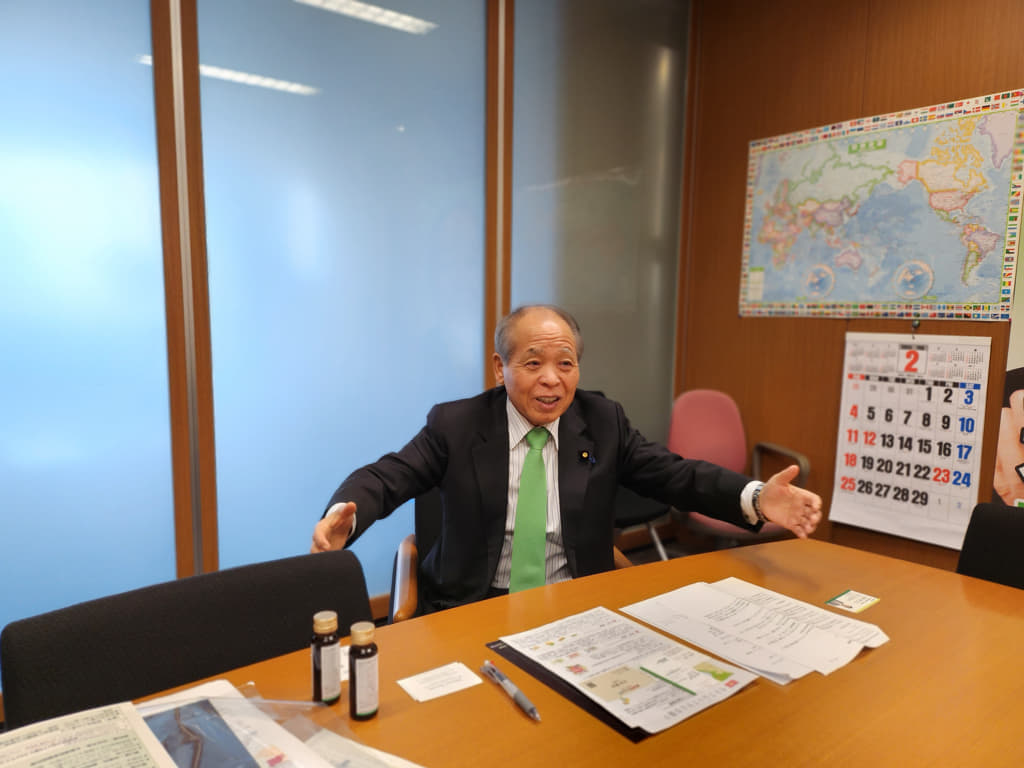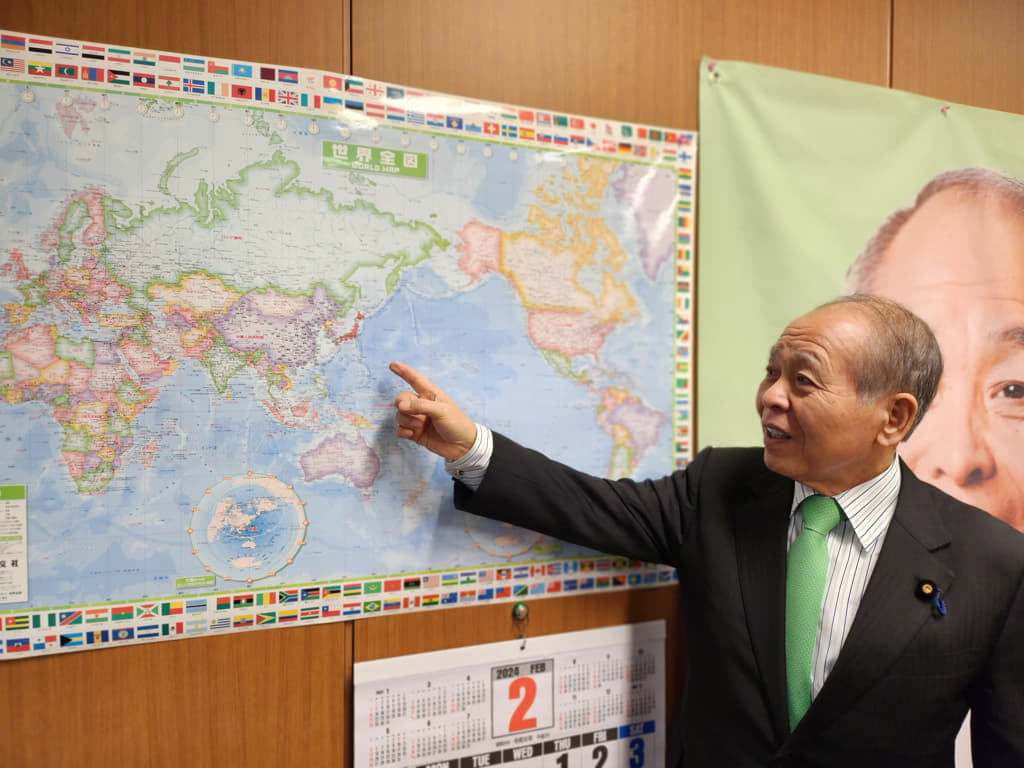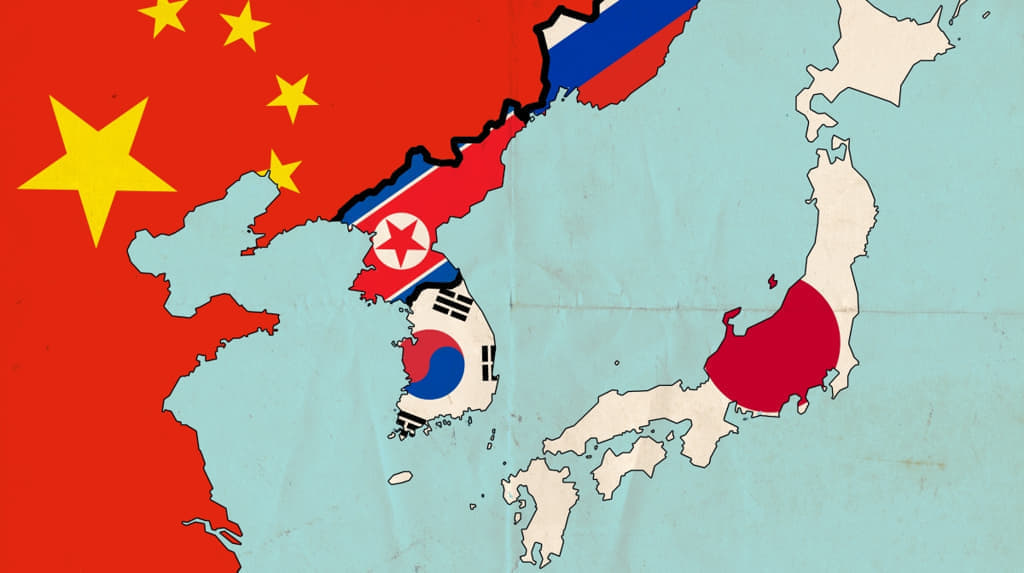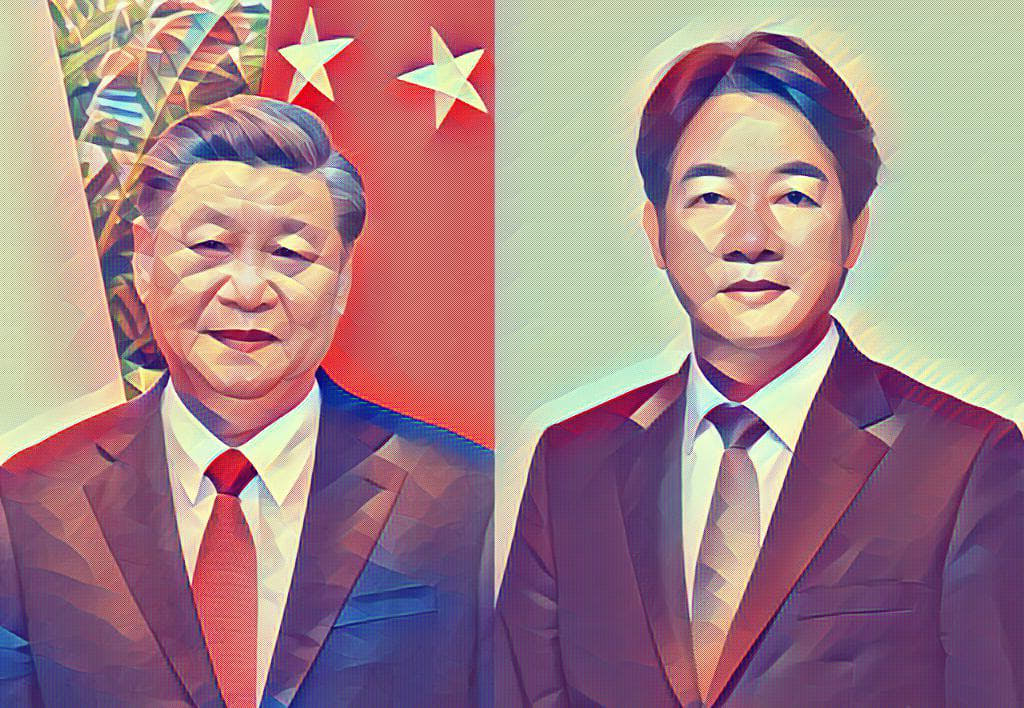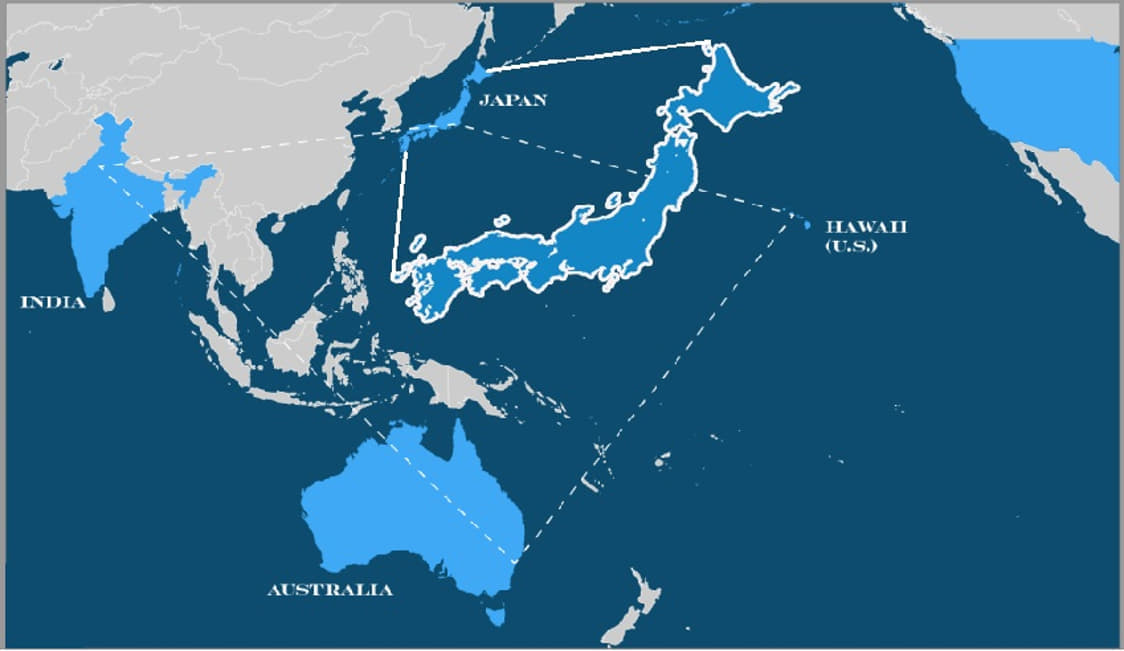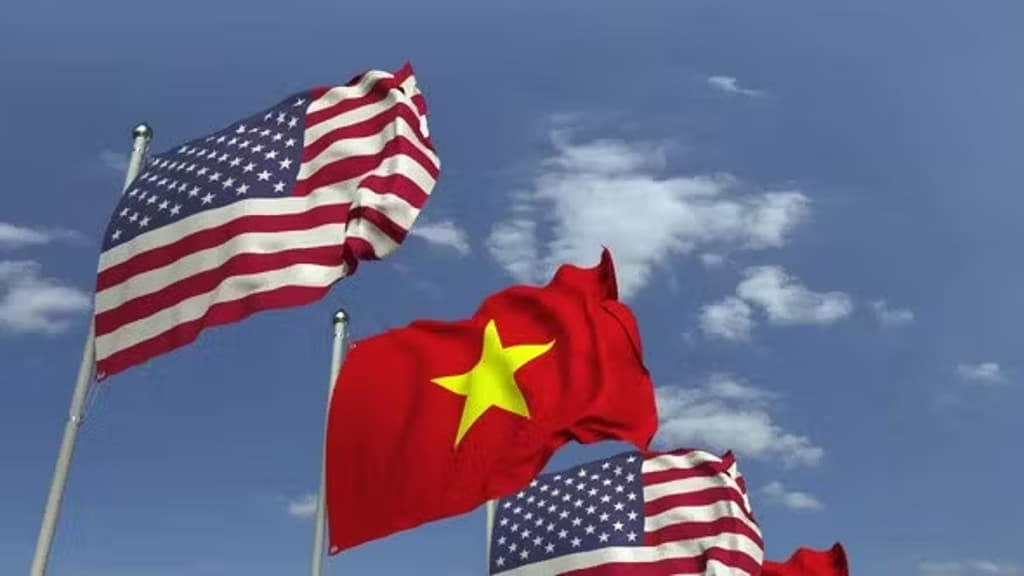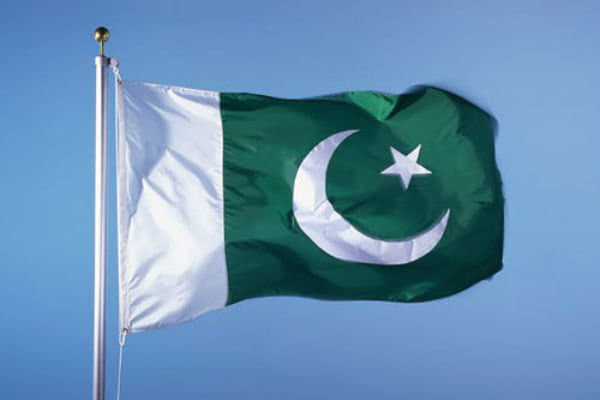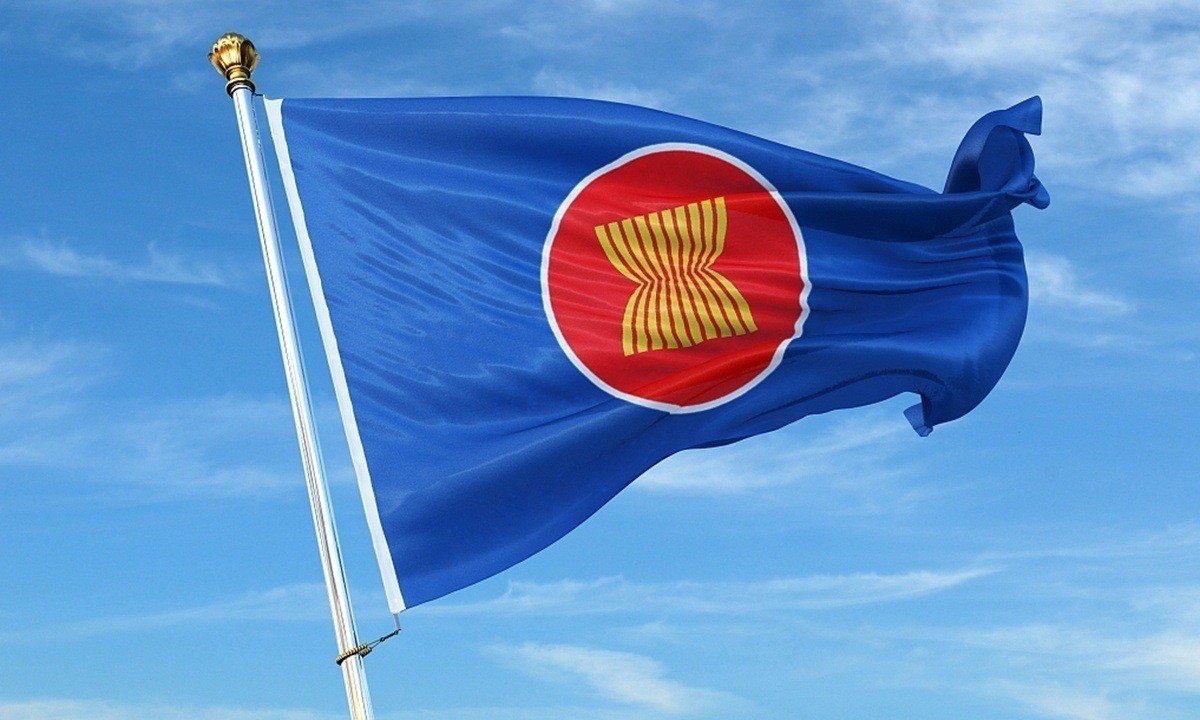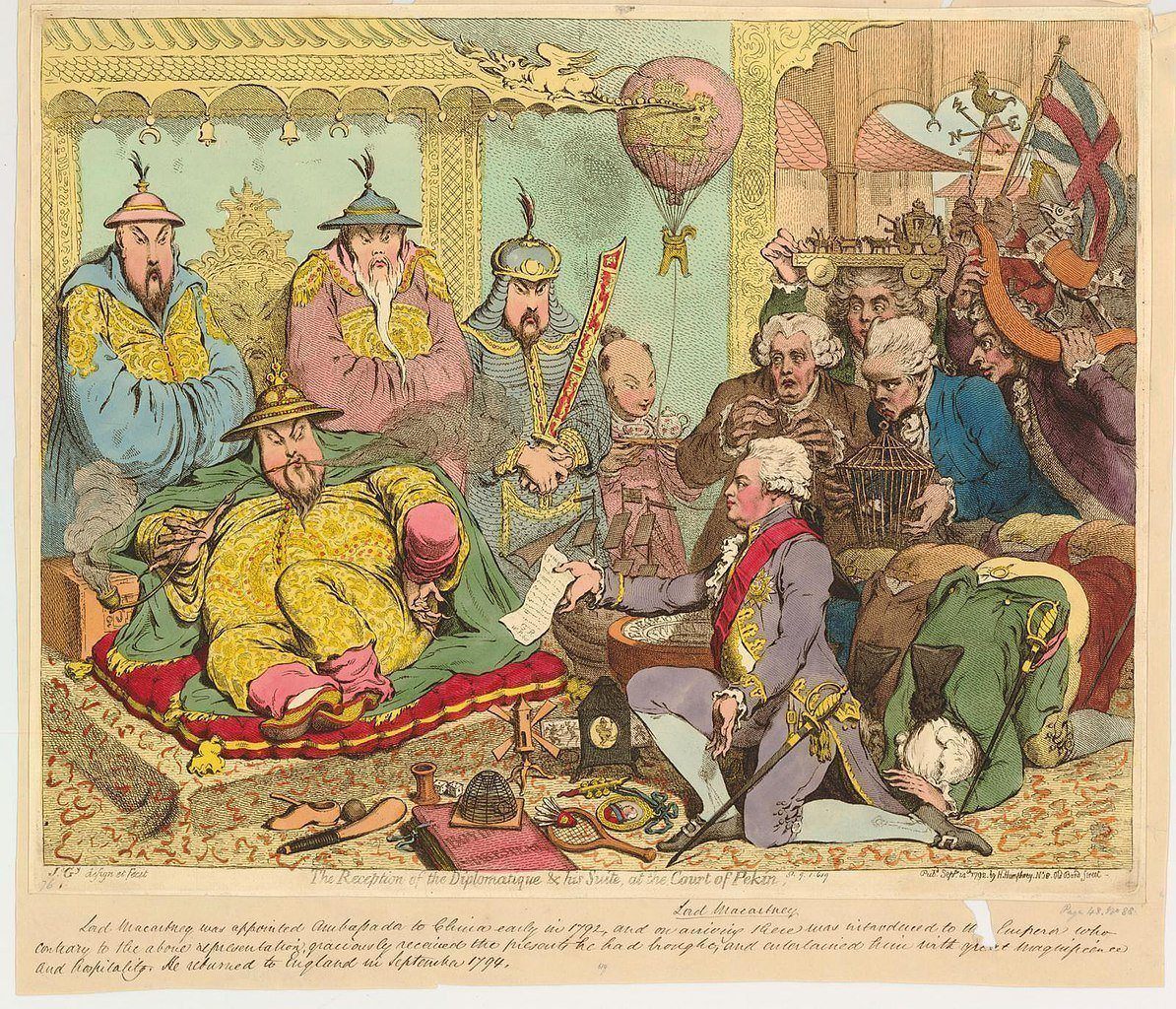Japan is key actor in the geopolitical region, fundamentally maritime, which extends from Southeast Asia to the Indian Ocean, known as the Indo-Pacific. In broader, geostrategic context for Japan, the Indo-Pacific is a space of connectivity between Asia and Africa (and from there to Europe), as expressed in the conceptual keystone of the Free and Open Indo-Pacific Strategy. It was the late Prime Minister Shinzo Abe who, announced it, while addressing the Indian Parliament in 2007. The stability of the Pacific and the Indian Ocean, and the preservation of safe and open sea routes for navigation in the region, is a goal shared by Japan and India.
Almost a decade later, during a visit to Kenya in 2016 and before the UN General Assembly in 2018, Abe reaffirmed Japan’s role as a champion of free trade in the region, as stated in the strategic document, entitled, Vision for the Free and Open Indo-Pacific (FOIP) whose main objectives are:
- Promotion and establishment of respect for rules, freedom of navigation and trade, as the first, main parameter;
- Incentive for the economic prosperity of the region;
- Development of a framework of peace and stability in the Indo-Pacific which would guarantee both the aforementioned freedom of commercial transit;
- Free economic activity of the countries involved.
The last concept is greatly relevant, given that this region includes more than half the world’s population and a large part of the planet’s economic activity and commercial exchanges.
For Japanese security architecture, the Indo-Pacific and its stability is the key to its own future as a country, a perspective even more established at the risk of the increasingly frequent maritime incidents in certain conflicts that really started decades ago and where China always constitutes one of the competitors and disruptor of stability. Observing the Chinese presence in the surrounding seas, more aggressive with respect to other Southeast Asian countries, Japan, with its own open conflict with China around the Senkaku Islands, looks for guarantees. Maritime security and freedom of navigation of the “FOIP Vision” are a priority, and the outbreak of a conflict near the Sea of Japan, whether a minor incident or one of major relevance around Taiwan (and the direct involvement of US forces against China), would have a massive impact on Japan, since it owes its economic and energy survival to the maritime routes through the Indian Ocean and the South and East China Seas.
The FOIP Vision is the cornerstone of the Japanese security policy, which not only determines its foreign policy but also mediates its defence policy, with the need for a robust reinforcement of national capabilities which appears to be understrength to face possible regional challenges. The fundamental alliance with the US and the growing cooperation in security matters with other states/ organizations, not necessarily located in the region (like EU and NATO), are crucial for Japan to respond in proportion to possible threats to the FOIP.
In the internal debates within the Liberal Democratic Party (LDP) that has governed Japan for decades, with few intervals, there are contending outlooks. The Abe governments set up a new defence concept with an intense diplomatic agenda, gathering support from other countries in the region and, above all, getting the US aligned with the FOIP Vision. The impact of Abe’s assassination in July 2022, although he was officially out of politics, had the consequence of presenting the Vision of the FOIP as his legacy, but also of the LPD; and it is firmly maintained by the other Japanese governments.
A FOIP Vision, symbolically renewed after a visit by Kishida to India last March 2023, has become the cornerstone of Japan’s economic and foreign policy and, therefore, the country’s security objectives. Thus, FOIP highlights the existence of an even more de-constructive scenario for the Indo-Pacific, especially after the start of the Russian invasion of Ukraine in February 2022. This pushed Japan further in its search for a security network. Likewise, attention is paid to previously present but secondary issues, such as attention to climate change, food security, health, prevention of natural disasters and the cyber scenario (New Plan for the FOIP, 2023). In conclusion, the FOIP Vision may be considered Japan’s greatest effort to expand its strategic horizon, laying the foundations for a regional order in the Indo-Pacific, in a context marked by the growing expansionism of China.
The Other Pillar
But the FOIP is not alone. The other doctrinal pillar of security policy of Tokyo is the National Security Strategy (hereinafter NSS), another legacy of Shinzo Abe era.
In 2013, the National Security Council, in a concept very similar to the US one, was established and it published the first NSS, in which the original guidelines of the National Defence Programs were reflected. The debate soon arose, when restrictions on the export of weapons were progressively relaxed and, above all, a legislative change was promoted in order to reinterpret the peace clause of the 1947 Constitution, in which Article IX renounces war as means of resolution in disputes between countries, and consequently for the armed forces on land, sea or air. Abe’s reforms enabled a change in Japanese foreign and defence policy. In 1954, the Self-Defence Forces Law allowed the establishment of the Japan Self-Defence Forces (JDSF), with many limitations and in order to prevent any worrisome memory from the past, with very limited powers and without the possibility of acting outside the country, according to the Basic National Defence Policy adopted in 1957, which made national security subject to collaboration with the United Nations (Japan joined the organization in 1955) and preserving internal security in the face of any possible aggression.
However, in June 1992, the Diet (Parliament) approved the Law on Cooperation in United Nations Peacekeeping Missions, which allows the JDSF to participate in missions outside the country under the UN flag (in accordance with the International Peace Cooperation Law issued in 1992, the Japanese troops participated in a number of peacekeeping operations, such as in Angola, Cambodia, Mozambique, El Salvador, the Golan Heights and Timor-Leste; JSDF dispatched disaster relief teams to Rwanda, Honduras, Turkey, Timor-Leste, Afghanistan, Iraq, Iran, Thailand, Indonesia, Russia, Pakistan, Indonesia, Haiti, Chile and Nepal). In 2004, Japan sent a fully combat unit abroad for the first time, specifically to Iraq.
In 2015, with Abe as prime minister, the so-called “Three New Conditions for the Use of Force” were introduced, a covert reform of the spirit of the Constitution from the Legislation for Peace and Security, which in essence authorized the government to intervene militarily outside the Japanese borders, either in self-defence or for relief of an ally attacked by third parties, thus suppressing the exclusivity of the UN for peace missions. This possibility of acting outside of Japan is the key in the new Japanese defence architecture, which also entails new needs, included in Japan’s Legislation for Peace and Security, adopted in 2016. The main lines of Japanese security policy are reflected in the Defence White Paper, an annual document prepared by the Ministry of Defence, starting in 2014. It is an informative instrument for public opinion on the priorities of internal and external security, analyzing the status of strategic objectives and alliances with third countries, but without committing to any specific initiative.
On December 16, 2022, the Japanese Ministry of Defence published the latest NSS, National Defence Strategy (NDS) and Defence Program. The importance of this NSS is evident, given that the latest dated back to 2013, during the Abe era. There are notable differences between the documents in consideration of the perception of increasing external threats, such as, in order of priority, China, North Korea and Russia. The concerns of the Tokyo government are reflected in the NSS itself by defining Japan’s strategic environment as the most “severe and complex” than at any time since WWII. This is due to the unilateral risks that threaten the sovereignties of the countries—pointing to Russia with respect to Ukraine—the importance of scenarios that in 2013 did not seem central, such as cyberspace, outer space or electromagnetic space, the risk to critical infrastructures, as well as the necessary attention to issues related to global governance.
The NSS also lays down the principles of Japan’s defence architecture:
- The commitment that it is up to Japan itself to provide sufficient initiatives and capabilities to meet its defence needs;
- Cooperation with other countries that share common objectives, the cornerstone being the traditional alliance with the US;
- Renunciation of nuclear means for the purposes of war.
The critical areas for Japanese security are the Indo-Pacific, its routes and the Sea of Japan regarding the threats posed by China, North Korea and Russia. Other documents, such as the National Defence Program, justify security spending priorities over the next decade, while the National Defence Strategy, which replaces the traditional National Defence Program Guidelines (that dated back to 1976), appears to be set very much in harmony with the national security strategies of the US, which proves the Japanese intention to deepen the alliance with its ally in terms of security, but also how the keystones of the FOIP Vision are adopted to the US; and Japan’s NDS and the US National Defence Strategy are well aligned and prioritize preventing unilateral changes to the status quo by force, integrating all approaches and means. Indeed, from the US, both in its Strategic Internal National Security Guide (issued on March 2022), and the National Security Strategy (October 2022), the current international system of countries is presented as a coalition of liberal democracies, where Japan is a key partner well beyond the Indo-Pacific or Asia, reaffirming Washington’s commitment to collaboration in its defence and giving Japan the status of being the cornerstone of this global alliance.
The Perception of Threats to Japan’s Security
In the December 2022 NSS, the government of Japan defined the main threats facing the country, namely, China, North Korea and Russia, in that order. With all these states, Japan has had a traumatic past, with the war against China in 1894, the war against Russia in 1904-1905, the occupation of Korea, the emergence of Tokyo as military power and its expansion in the region, followed by Japanese atrocities against civilian populations, the defeats in Manchuria by Red Army, the war against KMT (Kuomintang) and the CCP (Chinese Communist Party) forces, and the attack of Soviet Union in 1945. Despite this problematic past, the Japanese relationship with Moscow and Beijing was stable enough, while being positive and promising (with Pyongyang the relations were consistently bad). The scenario changed progressively in the 1980s and the 1990s, with the collapse of the USSR and the appearance of China as a formidable challenger, increasingly threatening the interests of Japan, India and several Southeast Asian countries.
China
Japan and China are the two largest economies in East Asia, and world leading economies, despite several problems which affect, in different way, their performances. Communist China was officially recognized by Japan as a state as late as 1972. Thereafter, then-PM Kaukei Tanaka became the first to visit Beijing, leaving behind the fiction of recognizing Taiwan as a state. Also relevant is the continuation of the row about the Senkaku Islands (Diaoyu, for China), an archipelago halfway between both countries, but under Japanese sovereignty and Chinese claims, in addition to being located less than 200 kilometers from the Taiwanese coast (Taiwan too claims these islands, but it a pure fiction or just flag-waving).
The Japanese national defence architecture unequivocally points to China as the main obstacle to achieving both security as a country and regional order in the Indo-Pacific. The FOIP Vision, with the need for an international system based on cooperation and rules, is in a blatant contrast with the methods, aims and objectives of Beijing, aware of the rising geopolitical containment led by the US, which considers the present scenario as not acceptable.
For Japan, China is defined as the main threat to the peace, security and stability of the country, literally constituting an “unprecedented strategic challenge,” showing growing concern about Beijing’s military capabilities, which are highly superior to the current ones of Japan; together with China’s belligerent narrative towards Taiwan, Japan is worried that any intervention on the island could trig a major crisis, involving not only the Indo-Pacific (Tokyo also has its own history regarding Taiwan. Japanese imperial possession, after the end of WWII, the US and its allies transferred the sovereignty of the island to the Republic of China, then in a civil war between nationalists and communists. Later, at the San Francisco Conference of 1951, the fate of the territories previously occupied by Japan was decided, without any Japanese, Chinese or Koreans participating in the discussions. Thus, Japan definitively renounced sovereignty over Taiwan, although it did not officially transfer it to any country). Also symptomatic was the Chinese reaction to the publication of the Japanese NSS, considering it a fake document, a mere repetition of the US conceptualization which demonizes China not only with respect to Japan, but at a regional and global level, poisoning the Sino-Japanese relations that had existed in previous decades, including a cordial meeting between Prime Minister Fushida and Chinese President Xi Jinping at the APEC (Asia-Pacific Economic Cooperation) Forum in Bangkok in November 2022, which occurred just before the publication of NSS.
North Korea
The second major threat to the perspective of Japanese security is North Korea, which in recent years has intensified the launch tests of ballistic missiles that end up falling in Japanese waters, increasing the perception of the nuclear threat for a country like Japan, which is perhaps the most sensitive in the world regarding this issue. Tokyo’s concerns about North Korean nuclear capabilities are reflected with concern in the December 2022 NSS, both in the quality of its development and its rapid evolution.
North Korea’s military activities and the possible nuclear threat represent an unprecedented event for Japanese national security and the most severe and complex moment than any other after the end of WW II. Reports on the development of the North Korean programs reveals that Japanese seismometers collected evidence of tests at up to 60 kilotons. These tests are accompanied by the already mentioned launches of ballistic missiles (the year 2022 reached the peak with 59 launches), some of which fell into Japanese sovereign waters after flying over its airspace. Other concerns are that some of these tests are also being carried out with hypersonic missiles; the presence of North Korean submarines missile/drone capable launchers sailing in the Sea of Japan; and North Korea’s announcement of the launch of spy satellites into orbit, considering Japan one of its objectives.
Russia
Until 2022, Russia was not a cause of particular concern for Japan’s security perception, despite the dispute over the sovereignty of the Kuril Islands that has been open since 1945, when the then USSR claimed those as its own. There is also no official treaty that put an end to the conflict between both countries after WWII. While in years past China and North Korea were already considered the main threats to Japan’s defence, this was not the case at all with respect to Russia, at least until 2014 and its annexation of Crimea. In the 2021 Japanese Defense White Paper, only a brief section is dedicated to Russia as a country responsible for certain cyber-attacks, and its alliance with China, and the growing development of the capabilities of the Russian armed forces and some other threats. such as the deployment of new generations of ballistic missiles. A year later, this perception has changed and Russia is gaining attention as a direct threat to Japanese security.
As of now Tokyo does not believe that a direct confrontation between both countries will happen. However, after the attack against Ukraine, from the Japanese perspective, Russia now is a country willing to break the established international system and this could happen also in the Indo-Pacific, a perception affirmed by the spectacular Russian-Chinese rapprochement; and that this could imply a potential change of the status quo in the region. Similar to what was seen for China and North Korea, the Japanese Ministry of Defence issued, in February 2023, a report analysing the development of the Russian Armed Forces in the area, underlining the air raids in the area of the Sea of Japan (multiplied since 2019), as well as the Russian-Chinese naval manoeuvers in the vicinity of Japanese territorial waters and the deployment of long-range missiles in the Kuril Islands.
Japan, as member of the G7, remains aligned to the position of the other members regarding Russia and the war in Ukraine, being one of the countries most involved in sending humanitarian aid to Ukraine—never war aid—and positioning itself very clearly in the condemnation of the United Nations and the sanctions against Russia. However, this position is showing a shift: Japan says it will send its own Patriot air defence missiles systems to the US to be later dispatched to Ukrainian forces after changing its arms export rules, in an important step away from its pacifist policies (the White House has welcomed the move, which could free up the US to send its own stockpile to Ukraine).
Japan is a regular guest at high-level NATO meetings, as part of the so-called AP4 group (with Australia, New Zealand and South Korea). At the Madrid Summit in June 2022, where the Strategic Concept of the Alliance was reworked, whit the definition of Russia as the direct threat to the security of member countries, PM Kishida was present at several of the meetings, consolidating the firm support of Japan to this line. More recently Japan’s candidacy was announced as a platform for a NATO mission with powers throughout the Indo-Pacific, which demonstrates the country’s alignment with the organization’s postulates. In April 2023, very significantly and at the same time that Chinese leader Xi Jinping visited Moscow and met with Russian President Vladimir Putin, Kishida visited Kiev and met Ukrainian President Volodymyr Zelensky, committing Japan as an important partner in aid and future reconstruction of Ukraine. This trip was also interpreted as a way to make visible the greater Japanese international activity in matters of first order, after decades of preferring to place itself at a lower level on the world stage and in a political line clearly hostile to China and Russia.
The Russian response regarding the Japanese position has been to consider Tokyo a belligerent country based on the publication of the NSS and the increase in defence spending. For Russia, there are still cases with Japan that have not been closed for more than eighty years. From Moscow, in April 2023, manoeuvers of the Russian fleet took place at the highest battle level and included the Kuril Islands in their radius of action. In reality, these exercises have been carried out from time to time, but this time were read as a warning signal towards South Korea and Japan.
Renewal of Old Alliances and Consolidation of New Ones
Japan’s alignment with the US is total, as testified by the NSS of December 2022. Also, the National Security Strategy of October 2022 and the Strategy for the Indo-Pacific of February 2022 coincide with the FOIP Vision, and the consideration of China, North Korea and Russia as common threats to both. For this reason, the Kishida government considers it essential to strengthen itself in terms of security, beyond increasing its own capabilities, through the renewal of the traditional alliance with the US, within the framework of the Mutual Cooperation and Security Agreement (signed in 1951). The other path is the search and consolidation of other alliances with third countries that share objectives in the Indo-Pacific, mainly India, South Korea, Australia, UK, France, EU and Southeast Asian countries
USA
After a devastating war and the American occupation of Japan, collaboration between both countries strengthened. A bilateral security treaty was added to the Mutual Security Agreement in 1960, but it was not yet a true alliance, given that Japan’s role was to be the main base of US power in the region and Tokyo was not yet a real military partner. Once again, thanks to Abe’s decision, real cooperation between the SDF and the US Forces began. In 2015, President Trump wanted to review this alliance with Japan, not because of the benefits it represents for both countries, but because of its imbalance, since on the basis of the Mutual Security Agreement, Washington maintains and pays for the presence of some 55,000 troops in the country (Japan now is the first in the world in terms of the number of US military established).
It should be remembered that since 1978 Japan paid for part of this deployment, reaching an amount nine billion dollars for the period 2016-2020. The Trump Administration asked the Japanese government to pay eight billion annually (a request partially stopped by President Biden). In January 2023, during a bilateral meeting between Kishida and President Biden, it was a massive reinforcement of Japanese defence was agreed upon, leading to the consequent increase in spending, gradual year after year until it reaches 2% of GDP, part of which will be used to purchase weapons from the US defence industry, such as attack ballistic missiles or unmanned vehicles.
In addition, the military dimension of the agreement wants to strengthen the capacity to carry out integrated operations, setting up a new C3 (command, control and communication) architecture between both countries, and to achieve deeper levels of information exchange; and, as in the Trump presidency, a review of costs. One of the critical areas is cybersecurity. There are speculations that Japan could join the Five Eyes group, a shared information and intelligence network between US, UK, Canada, Australia and New Zealand. It does not seem to be a priority for Japan, which also has to develop its means in this regard, while however it does seem to be a notable actor in the Initiative against Ransomware, an international project launched from the US in October 2022, which tries to prevent and prosecute cybercrimes.
Washington is also interested in Japan being able to get involved in security issues in the Indo-Pacific; another reason to promote new capabilities and investment in the Japanese country, which is already working intensively within the framework of the Quadrilateral Security Dialogue (QUAD) along with Americans, Indians and Australians. As in the case of the Five Eyes, some media speculate about the possibility of an invitation to Japan to participate in AUKUS (the alliance between Australia, UK and US) on a scale to be defined and with the marked red line, which would entail, for example, the acquisition of nuclear submarines that Australia has decided upon.
India
Abe was the symbol of the alliance between India and Japan in order to emerge as leading countries within the Indo-Pacific, sharing similar political visions, in line with the FOIP Vision, and with clear implications in security, like QUAD (initiated in 2007, paralleled by joint military exercises of an unprecedented scale).
For India, the Indo-Pacific is a natural extension of a strategy that was already reflected in the Act East Policy (2014), with the aim of boosting the Indian presence in Southeast Asia. China’s influence in the Indian Ocean and its relations with countries like Pakistan and Sri Lanka are perceived as a threat to India’s attempt to become a regional power with global aspirations. Also, India shares the Japanese views vis-à-vis China, and in 2015 both signed the Special Strategic and Global Partnership, corroborated by the massive participation of Japanese firms in the infrastructural projects of India, starting with the nationwide network of high-speed trains.
Following Abe views and actions, in March 2022, Prime Minister Kishida travelled to India to meet with Modi. Of the importance of the meeting, it is enough to remember that Kishida announced the new FOIP Vision plan and also a Japanese investment in India of 38 billion dollars. Japan’s collaboration with India seems decisive in boosting the latter at the regional level. While India is the westernmost part of the Indo-Pacific megaregion, Japan is the easternmost part of it; positive relationships and the common advantages are promoted with a special look to the security of trade routes. In this regard, a recent example has been the institutional and economic crisis in Sri Lanka since July 2022. The restructuring of Sri Lanka’s external debt has involved both India (mainly), and also Japan, creditor of 9% of the same and a country that promotes various humanitarian assistance initiatives. Without a doubt, it is important for Japan to preserve the stability of Sri Lanka, first of all as an important point for Japanese investments, but also from a security perspective in the region, since Sri Lanka is a key country on the maritime routes that connect the Indian Ocean with the Sea of Japan, with its port infrastructures that are of vital importance for Tokyo (especially the strategic container terminal of the port of Colombo, a colossal Indo-Japanese joint venture launched in 2021).
South Korea
Seoul is an ally (more or less) with which Japan wants to strengthen relations. South Korea, along with China, is the country with the most problematic past vis-à-vis Japan. In 1910, Korea was formally annexed by Japan after years of wars, intimidation and political machinations. In order to establish control over its new protectorate, Japan waged an all-out war on Korean culture and the country suffered a brutal domination, symbolized in the so-called “comfort women” and their demands for justice to Japan—a past about which Tokyo is still timid.
The suspicions between both countries do not remain limited to the controversial past, but the divergences are also open over the islets of Takeshima, in Japanese, or Dokdo for the South Koreans, who hold a sovereignty that the Japanese in turn claim as a part of their country. Some frictions of varying intensity periodically arise around this archipelago, such as in 2019. Relations between Seoul and Tokyo deteriorated greatly during Abe’s term due to disputes over compensation to forced labourers by Japanese companies during the colonial period. Today, however, the situation has changed radically. Since 2022, the South Korean government under Yoon Suk-yeol has been working with that of PM Kishida to resolve this issue, while both countries seek to cooperate in other areas, such as commercial or military, including meetings between both leaders.
The Japanese NSS of December 2022 positions South Korea as a strategic neighbor for Japan with which it shares common interests. For its part, South Korea’s Security Strategy contains the same perception regarding Japan, even if Seoul has expressed its concern about Tokyo’s planned rearmament, especially its medium- and long-range ballistic capabilities. But the excesses of Pyongyang have had a positive impact on the rapprochement between Seoul and Tokyo, on the way to being closer unlike previously—a complicated architecture for two countries allied firstly with US, and secondly with their neighbour. This situation is witnessed by the multiplication of trilateral aeronaval exercises and the joint communiques blasting the tests of North Korea.
United Kingdom
Brexit brought back the UK as individual actor on the international scene, even if with the status of small-medium size power, and the close relationship between London and Tokyo has spilled over into common interests in the Indo-Pacific; also there is no territorial presence of the UK in the area with the exception of Chagos Islands (British military presence is recorded in the UN Command in Korea, small teams in Singapore and Brunei and liaison personnel in Australia and New Zealand).
There has long been a non-formal alliance between the UK and Japan since the beginning of the 20th Century, something that has been growing in recent years and in several areas, such as security, trade or energy supply, including after Brexit. The signing of an agreement in 2020 that granted the UK even more advantageous benefits than those existing with the EU. Both countries clearly align with a shared commitment to the region, in line with the FOIP Vision and with respect to a world order led by the US, the basis of a partnership and which also determines the British strategy for the region, taking into account Japan as an essential ally, as shown by the historic defence agreement in January 2023, which allows for the deployment of British forces in Japan to carry out large-scale military exercises. Another example of the extensive cooperation of both countries is that the UK and Japan partnered, together with Italy, to develop the next generation of combat aircraft.
EU
The Indo-Pacific region, with increasing tensions between the United States and China, is beginning to be a priority in the common foreign and security policy of the EU, including the publication of a Strategy for the region (2021) and a platform for some diplomatic approaches and initiatives, and collaboration with its partners.
Japan, as a key country in East Asia and the Indo-Pacific, is a pivot partner for EU, a partner with which it shares values and interests, seeking a closer strategic partnership that the Japanese country finally perceives the EU as a reliable partner in security, something beyond trade, the economy or technological cooperation. Since the start of the war in Ukraine in February 2022, together with the tensions around Taiwan, the EU, through its member countries, has participated more closely in security matters with Japan. This cooperation translated more into the naval realm; but since mid-2022 it has also increased in terms of aeronautical exercises.
French and German ships operate in Indo-Pacific waters and participate in various maneuvers with Japanese ships and other countries, as well as combat aircraft (also French and German); they also share aerial exercises with participation from the US, Japan, and South Korea. South or Australia. Other ships from European countries have been participating in various naval maneuvers with the Japanese Maritime Self-Defence Force for more than five years; in the case of Spain, for example, since 2016 and in various scenarios.
Thus, EU wants to convince Japan that it is a relevant partner in terms of security, transmitting the message that in a situation of tension, European countries can also provide valuable help. Relations with the EU and Japan have doubled the bilateral network that has existed for many years. However, it was in 2019 when the EU as a whole signed two basic agreements with Japan for its current commercial and strategic relations: the Strategic Partnership Agreement and the EU-Japan Economic Partnership Agreement, to which was added, in 2022, the Agreement of Digital Cooperation. In this case, Japan is the first country with which such an agreement on cyber matters has been signed by the EU (at the EU-Japan Summit, 2022).
France is perhaps the European country with the closest relationship with Japan, sharing the same security strategy for the Indo-Pacific region and the values of the Japanese FOIP Vision. France includes Japan as a priority in its strategic documents, and bilateral aeronaval maneuvers and exercises are common and frequents, as well as periodic meetings at the highest level between the Ministries of Defence and Foreign Affairs of both countries.
NATO
In consideration that NATO also labels China and Russia as potential and future enemies, the relationship with Brussels, existing for many years with a formula of security conferences in the 1990s, in the Netherlands, saw a massive growth in recent time, coinciding with the Chinese, Russian and North Korean pushes.
NATO and Japan signalled their commitment to strengthening cooperation in a joint political declaration signed in April 2013. From 2014, work was taken forward through a NATO-Japan Individual Partnership and Cooperation Programme. Currently, the cooperation is guided by an Individually Tailored Partnership Programme that NATO and Japan agreed to in July 2023.
Practical cooperation is being developed in a wide range of areas, including cyber defence, maritime security, humanitarian assistance and disaster relief, non-proliferation, science and technology, human security, and Women, Peace and Security. Japan is one of NATO’s partners in the Indo-Pacific region, together with Australia, the Republic of Korea and New Zealand. The Indo-Pacific region is important for the Alliance, given that developments in that region can directly affect Euro-Atlantic security.
Japan has participated in NATO’s cyber defence exercises Cyber Coalition and Locked Shields and is a contributing participant at the NATO Cooperative Cyber Defence Centre of Excellence, in Tallinn, Estonia.
Japan participated, for the first time in a NATO-led humanitarian assistance operation, following the devastating 2023 earthquakes in Turkey. NATO and Japan are enhancing their cooperation in the area of emerging and disruptive technologies through Japan’s participation in the activities of NATO’s Science and Technology Organization (STO).
Japan is also engaged in the framework of the Science for Peace and Security (SPS) Programme, particularly in activities in the fields of counter-terrorism and the detection and clearance of mines and unexploded ordnance. Ongoing research and multi-year projects with Japan are aimed, for instance, at advancing procedures and technologies for the safe detection of landmines. Expanding on the results of previous cooperation, Japanese scientists are researching a semiconductor-based sensing device that will facilitate the identification of explosive chemical, biological, radiological and nuclear (CBRN) materials or special nuclear material at ports and border crossings.
Japan has had a longstanding cooperation with the Alliance on maritime security. Japan’s Maritime Self-Defence Force trained with NATO ships in the Mediterranean in 2022 and in the Baltic Sea in 2018. Japan has designated a liaison officer to NATO’s Maritime Command. Always in the military dimension, since 2014, under the NATO’s Partnership Interoperability Initiative, Japan has been participating in the Interoperability Platform. Japan has made generous contributions to NATO Trust Fund projects in various partner countries.
Most recently, Japan has provided significant support to Ukraine, including through a contribution to NATO’s Comprehensive Assistance Package for Ukraine. Previous important contributions by Japan were designed to enhance stockpile management and the physical security of ammunition in Afghanistan and Tajikistan; to destroy dangerous stocks of pesticides in the Republic of Moldova; and to clear an ammunition depot in Georgia, as well as contaminated land in Azerbaijan.
As of now, however, the political dimension of the relation with NATO remains predominant. At the 2021 NATO Summit in Brussels, Allies agreed to increase dialogue and practical cooperation between NATO and existing partners, including Japan as one of the partners in the Indo-Pacific region. This commitment was reiterated in the NATO 2022 Strategic Concept, the Alliance’s core policy document. Cooperation with partners in this region is key to addressing the increasingly complex global security environment, including Russia’s war on Ukraine, the shift in the global balance of power and the rise of China, and the security situation on the Korean Peninsula.
In June 2022, the Prime Minister of Japan participated in the 2022 NATO Summit in Madrid, together with the Leaders of other partners from the Indo-Pacific region (Australia, the Republic of Korea and New Zealand). This was the first-ever participation of Japan in a NATO summit. In July 2023, the country participated in its second meeting at the level of Heads of State and Government, at the 2023 Vilnius Summit. In April 2022 and April 2023, Japan participated in the NATO Foreign Ministers’ meetings. This followed Japan’s first-ever participation in a NATO ministerial meeting, in December 2020. Japan also regularly participates in meetings held at NATO Headquarters in Brussels between NATO Allies and the four partners in the Indo-Pacific region at the level of Ambassadors. Recent meetings have focused on climate change and security, arms control, and maritime security.
Japan provided support for the International Security Assistance Force (ISAF) and for wider reconstruction and development efforts in Afghanistan. It helped to mobilise international support for Afghanistan by organising the Tokyo Conference in July 2012 and pledging USD 5 billion to this end over a five-year period (2009-2013). Earlier, Japan supported efforts to disarm, demobilize and reintegrate former combatants, and to reintegrate insurgents under the Afghanistan Peace and Reintegration Programme. It also supported various initiatives, including human security projects at the grass roots level in several regions of Afghanistan, and contributed to the Afghan National Army Trust Fund. In the 1990s, Japan played a role in stabilising the Balkans, where NATO led several peace-support operations since the mid-1990s. As a major donor country, it has contributed to the successful recovery of the Balkans region and its reintegration into the European mainstream.
ASEAN
Despite the centuries-old historical reluctance about Japan’s projection in East Asia by the countries of the region, which in turn make up the Association of Southeast Asian Nations (ASEAN), there are common interests from both areas. The first is the confrontation with the Chinese threat, since recently there have been confrontations of different intensity with ASEAN States, such as Vietnam, the Philippines or Indonesia, always in relation to sovereignty disputes in the waters of the South China Sea, but of which Japan draws conclusions about its own disputes with the Chinese giant.
After WWII, Japan was stripped of all primacy in Southeast Asia and until recently has not shown much interest in the international order in the region. Its FOIP Vision, plus the evolution of the security posture, mean that a shift is also taking place in this regard. Collaboration with ASEAN becomes essential for this, including support for the Association’s initiatives since 2015 and bilateral dialogue to create common institutions and initiatives, despite the challenge that Southeast Asian societies’ perception of the past continues to pose.
The Vientiane Vision (2016) is the initiative that Japan has published for security cooperation with ASEAN, being a document that establishes the Japanese approach regarding the future of the bilateral relationship and where an annual follow-up is made of the common activities proposed in military matters, with exercises and common exchanges of media and information, as well as the Vice-Ministerial Defence Forum and the promotion of multilateral cooperation through regional frameworks, Japan is involved in the factory of other infrastructures in the Indo-Pacific and Southeast Asia, in various countries such as Myanmar or Indonesia; the sale of patrol boats to Vietnam, Sri Lanka, Maldives or the Philippines; assistance in the control of illegal fishing, airspace or ship maintenance again in Sri Lanka, Vietnam and the Philippines, and also in Thailand, Brunei, Indonesia or Malaysia. Japanese activity in relation to security in the region and in line with the FOIP Vision, has reached Africa, providing coast guard vessels to Kenya or Djibouti, establishing a tie that is the beginning between this framework and the TICAD (Tokyo International Conference for African Development), the historical tool of relations between Japan and the African continent.
Australia and New Zealand
Regarding Australia, it is a regional actor with which Japan shares objectives within the framework of the QUAD, but with which it has also advanced in an unprecedented bilateral relationship in terms of security and military cooperation, which is also reflected in the industry: defence, reciprocal access agreements in research and development sectors, cybersecurity and matters within energy security and renewable energies. The Australian Defence Force and the SDF have developed several exercises, only surpassed by those carried out together with the United States in the Australian case.
The new government (and chambers) of New Zealand shows that Wellington has changed the approach vis-à-vis with the AUKUS and will be more coordinated with Canberra in security and defence policies and, by consequences, also the ties with Japan will be reinforced furtherly.
Conclusion
Article 9 of the 1951 Constitution theoretically limits Japanese war capabilities, within the framework of necessary self-defence tasks. Possession of weaponry consisting of intercontinental ballistic missiles, long-range bombers, or aircraft carriers would exceed this level of necessary self-defence and would not be constitutionally permitted.
In the new NSS of December 2022, the commitment to increase defence spending annually until it reaches 2% of GDP in 2027 appears explicitly—since 1976 the limit was 1 percent—for which it is estimated that a total of 43 trillion Yen, almost 304 billion euros over the five planned fiscal years from April 2023 to March 2028. Based on current global trends, this would make Japan’s defence budget at the end of the decade the third largest worldwide, only behind those of the US and China. Indeed, at the end of 2021, a record defence budget was approved for 2022. Spending will be 5.4 trillion yen (42 billion euros/46 billion dollars), for the eighth consecutive year in history, the largest figure allocated to Japanese defence. An alternative would be to use for military purposes certain programs created to provide humanitarian and civil aid to countries in need, including from now on some defence-related expenses for the first time in history. Thus, the Kishida government plans to expand a program called Security Assistance with the objective of providing aid to third countries, including those within the military sphere and speculating that some beneficiary countries of the program, such as the Philippines, Malaysia and Bangladesh, could spend said aid on purchases from the Japanese defence industry.
Japan’s strategic shift requires more budget and the development of a defence industry that can meet new demands, among other measures. As we saw in the section dedicated to the alliance with the United States, defence industrial cooperation is also of interest to both countries. Japan can contribute its cutting-edge technology in areas such as aerospace, autonomous systems and artificial intelligence. There has also been talk of other products, such as ammunition, a need that now appears critical in the current war in Ukraine.
In line with the sustainability and resilience objectives of the NSS, Japan not only needs to reactivate a defence industry, but has developed projects in the field of security, and more specifically in union with other countries that can provide very valuable help (the main example being the Global Combat Air Program which, together with Italy and the United Kingdom, would help stimulate the Japanese aeronautical defence industry).
Finally, there are other critical points, first of which is the reluctance of the Japanese public opinion in the military universe, revealing that the stigma of the lost war and the devastating human losses and physical damage are not yet fully absorbed. Paradoxically, the pressures of China, North Korea and Russia are the strongest dismantling components for the reluctant stance of the Japanese people.
Enrico Magnani, PhD, is a retired UN official and expert in military history and international politico-military affairs.

